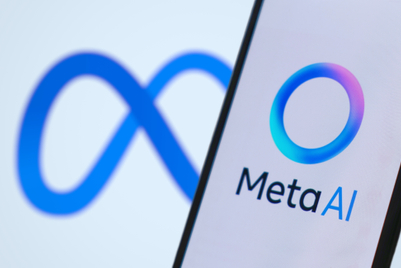.jpg&h=570&w=855&q=100&v=20250320&c=1)
Judging from the barrage of ads flooding the airwaves, the ballot question on Nov. 5 has become clear: "Which candidate do you least fear?"
It’s a stark shift from the usual narrative arcs that have long defined American elections. Typically, progressives seek to inspire, casting their candidate as the beacon of hope, while conservatives—especially under Trump—play to anxieties, portraying themselves as the stronghold against chaos.
But this year, both sides seem to be trading optimism for alarmism, each presenting the other as a greater existential threat. They are spending a fortune in the hope that it will move the needle in their favour.
To provide context, a New York Times analysis found that households in Pennsylvania have seen an average of 1,391 political ads since Aug. 1, about 16 per day. In the presidential race alone, Kamala Harris outpaced Donald Trump, accumulating 11.8 billion ad views, compared to Mr. Trump’s 8.5 billion.
Here's a look at the narrative emerging from the deluge of ads Americans, particularly those in battleground states, have been exposed to.
Economy as a central battleground
Trump’s ads emphasised a return to the economic stability of his previous term, framing Harris as a candidate who would raise taxes and impose additional costs on consumers. In ads like “Gonna”, which uses truncated quotes and ominous music, Trump’s team distorts Harris’s tax policy by presenting her as eager to increase taxes on all Americans, even though her proposals primarily target the wealthy and large corporations.
Ads for Harris, such as “For Regular People” by Future Forward PAC, counter the economic argument by presenting her as the candidate who will lower costs for the middle class. This ad, featuring a disillusioned Republican voter, seeks to undermine Trump’s economic record by highlighting the impact of tariffs and tax cuts for the wealthy. The ad frames Harris as the “regular people” candidate, a tactic designed to soften her image among undecided conservatives.
Character and competence
Harris’s campaign also deployed aggressive character attacks against Trump, particularly in ads like “A Warning,” which leverages former Chief of Staff John Kelly’s damning comments to portray Trump as a fascist. The ad features alarming sound design and stark visuals, aiming to paint Trump as unfit for the presidency. Similarly, the “Safety and Security” ad uses former Trump officials’ testimonials to suggest that Trump would compromise disaster relief based on political leanings.
Trump’s ads, such as “Nothing Will Change,” seek to conflate Harris’s perceived flaws with President Biden’s shortcomings, presenting her as an extension of his administration. These ads juxtapose images of chaotic events—like border surges, inflation, and war—with Harris’s dismissive interview responses, emphasising her continuity with the status quo.
Security and extremism
Ads like “Project 2025 Agenda” portray Trump as an existential threat to American democracy. They warn of unchecked presidential power and economic consequences, like Social Security and Medicare cuts. This ad uses dramatic visuals to associate Trump’s policy agenda with financial instability and threats to personal freedoms, such as a national abortion ban.
Trump’s ads link Harris to past positions on energy, particularly her co-sponsorship of the Green New Deal, presenting her as a threat to American energy independence and economic stability. In this ad attacking Harris on energy and fracking, Trump’s team paints Harris’s environmental policies as job killers and sources of increased energy costs while depicting Trump as the candidate who will bring back “stronger” economic conditions.
Identity politics
The Republican Jewish Coalition’s ad, “Amen,” targets Jewish Democrats disillusioned by the current administration, portraying Trump as a safer option against rising antisemitism.
By focusing on reproductive rights, Harris tried to energise female voters, particularly in battleground states where abortion has been a decisive issue. Ads like “Project 2025 Agenda” also emphasise the threat of a national abortion ban, portraying Harris as the candidate protecting women’s rights.
But while both parties have taken very different approaches to messaging, as one would expect, they have adopted a similar quantity over quality strategy for 2024, where ad makers throw everything at the wall to see what sticks.
An ad like "For Regular People" is only one of many created by Future Forward, the $700 million super PAC backing Kamala Harris. It exemplifies the shift from a “craft” approach to a “factory” approach in political advertising. It’s all about volume and rapid testing—producing 20 potential ads for every ad that airs.
At some point, we reach a saturation point. There’s a limit to how much voters can absorb before they tune out altogether. When this happens, each new ad delivers diminishing returns: voters are either too overwhelmed to process more messages or grow cynical as competing ads contradict each other.
I did my own research for this column with my daughter, who lives in Dallas. In her case, saturation seems to have set in sooner than during past elections, driven not only by the presidential campaigns but by Senate, House, and local races—all adding to the noise, with each ad nastier than the other as voting day approaches.
So, does this mad chase for a greater share of voice matter in the end?
David Broockman, a political scientist at Berkeley, sums it up in a New York Times interview: "We have fairly decent evidence that TV advertising has a very small but non-zero effect. And when you multiply a very small effect by a gigantic amount of money, it could swing enough votes to change the outcome in a close election.”
A small but non-zero effect? Perhaps it's time to make political advertising great again.
Éric Blais is president of Headspace Marketing, a consultancy that helps marketers build brands in Quebec. He can be reached at feedback@headspacemarketing.



.jpg&h=334&w=500&q=100&v=20250320&c=1)





+(900+x+600+px)+(3).png&h=334&w=500&q=100&v=20250320&c=1)
.jpg&h=334&w=500&q=100&v=20250320&c=1)


.jpg&h=268&w=401&q=100&v=20250320&c=1)

.jpg&h=268&w=401&q=100&v=20250320&c=1)
.png&h=268&w=401&q=100&v=20250320&c=1)
.jpg&h=268&w=401&q=100&v=20250320&c=1)
.png&h=268&w=401&q=100&v=20250320&c=1)
